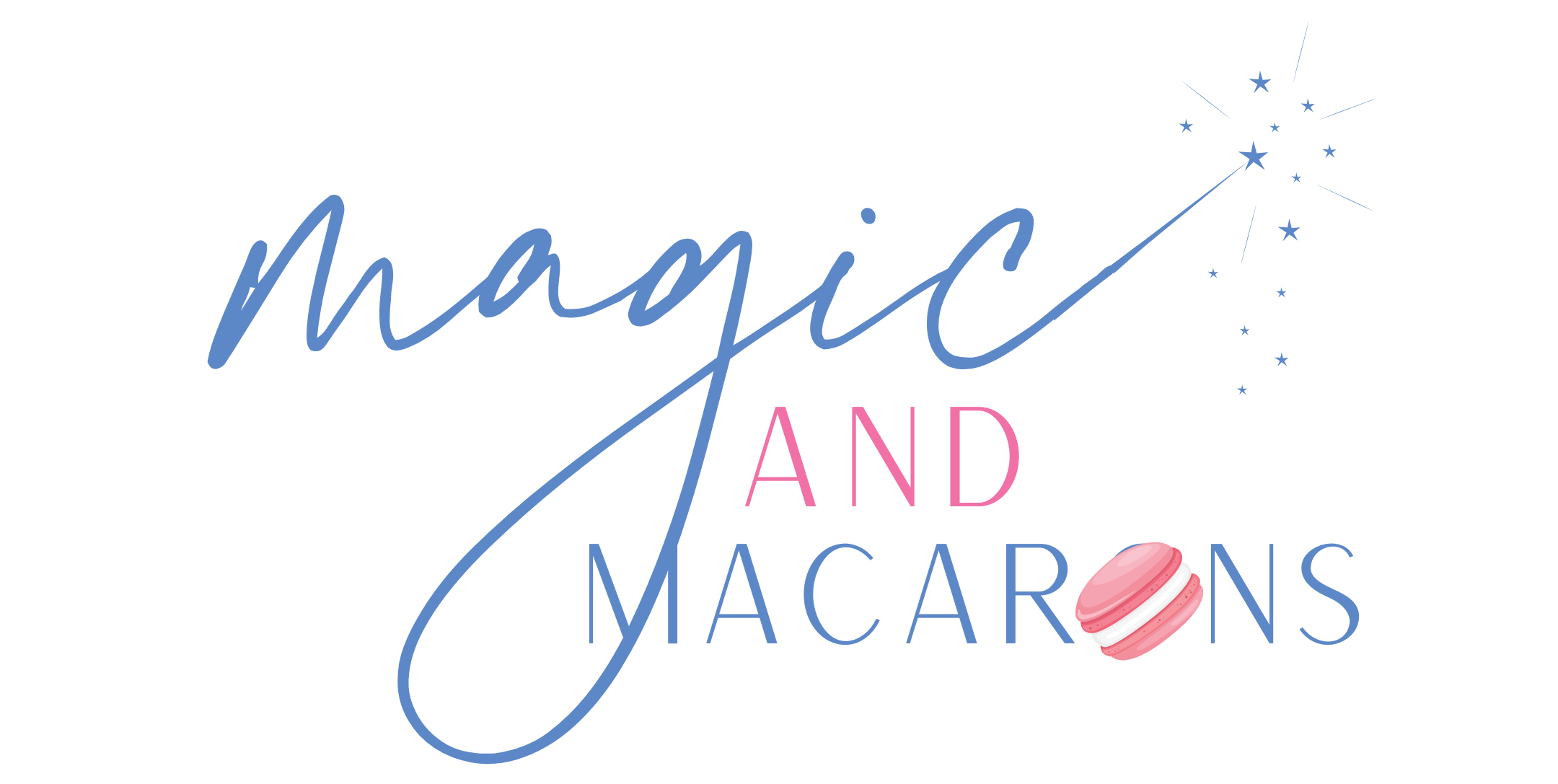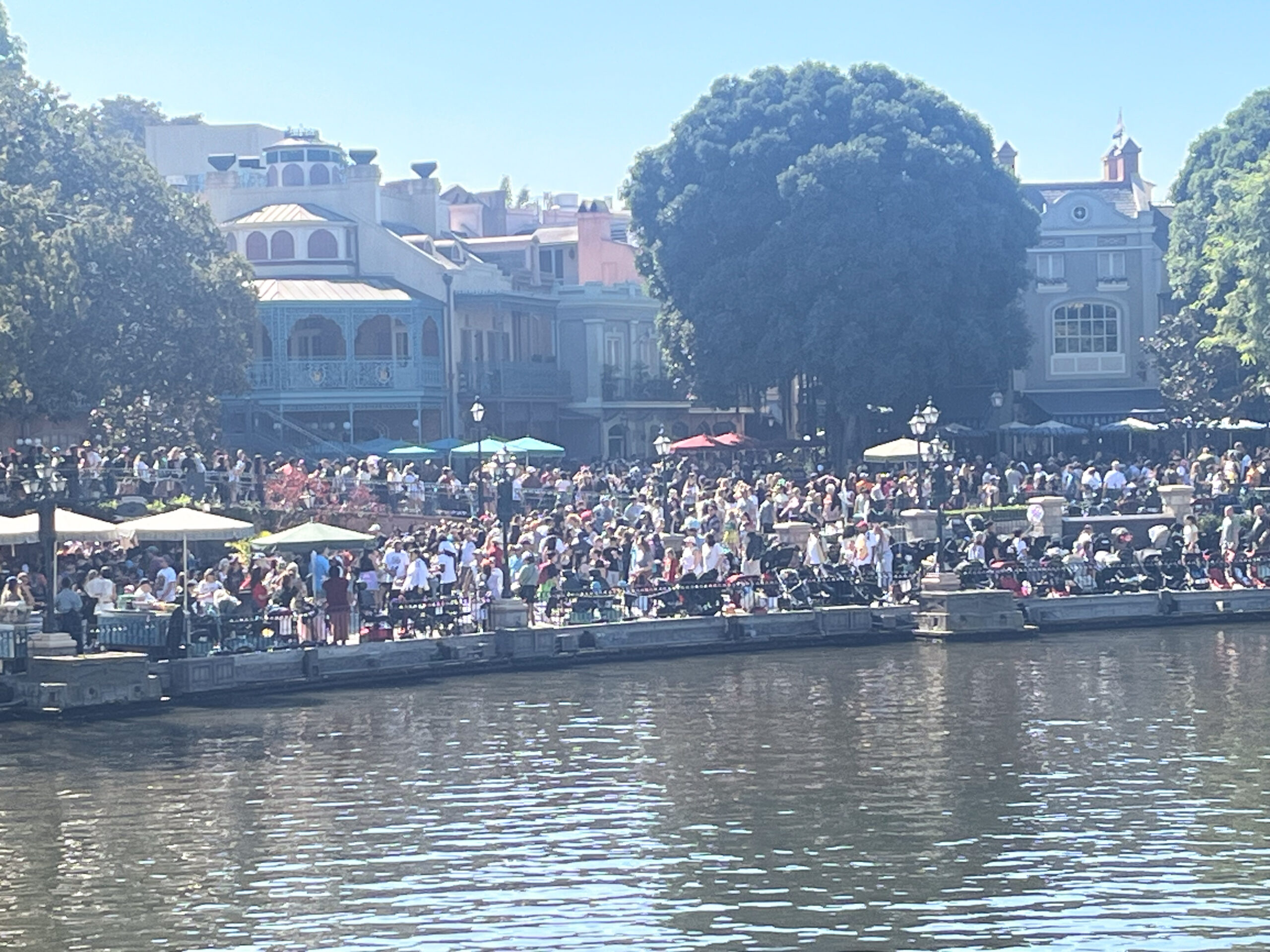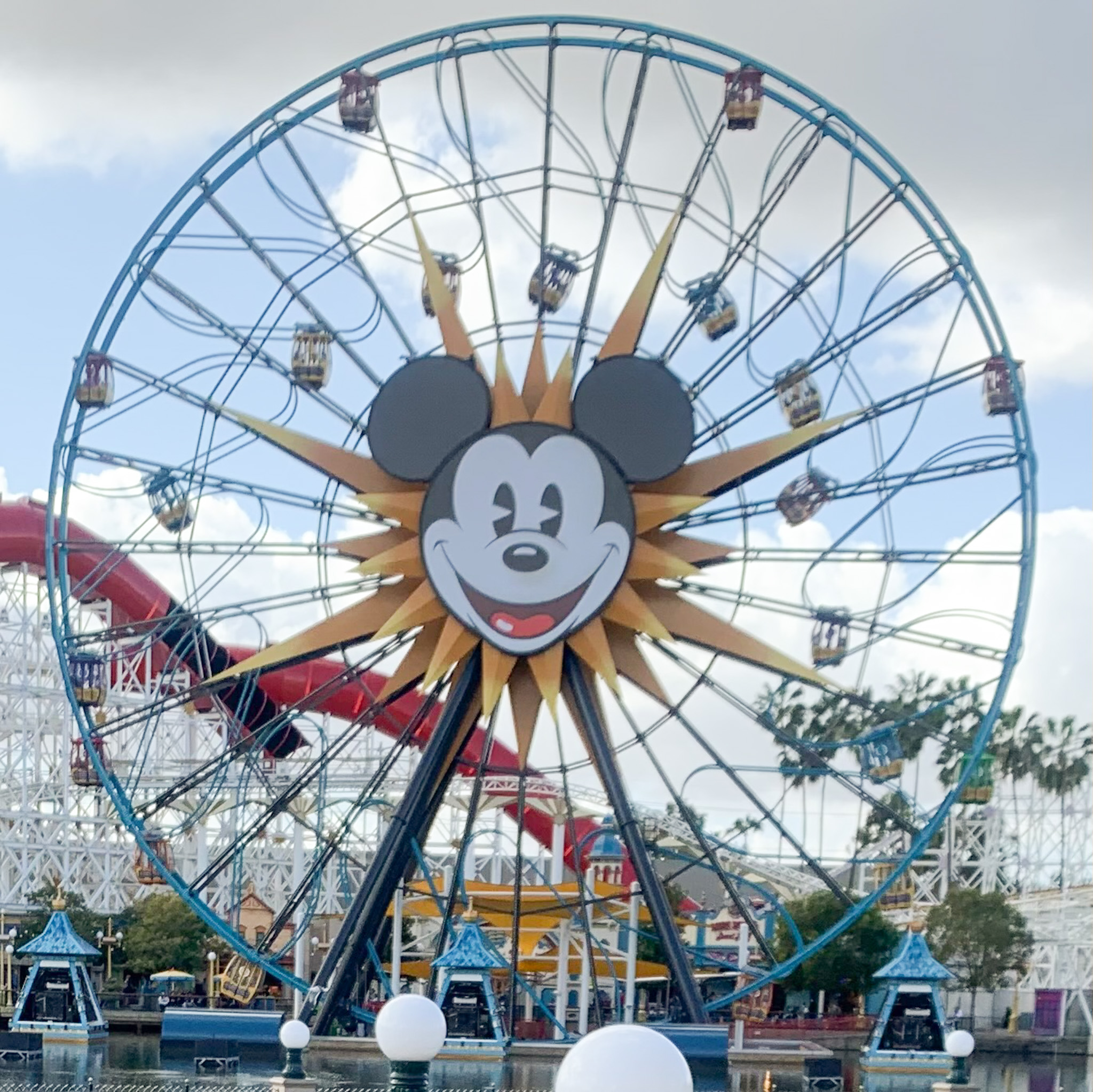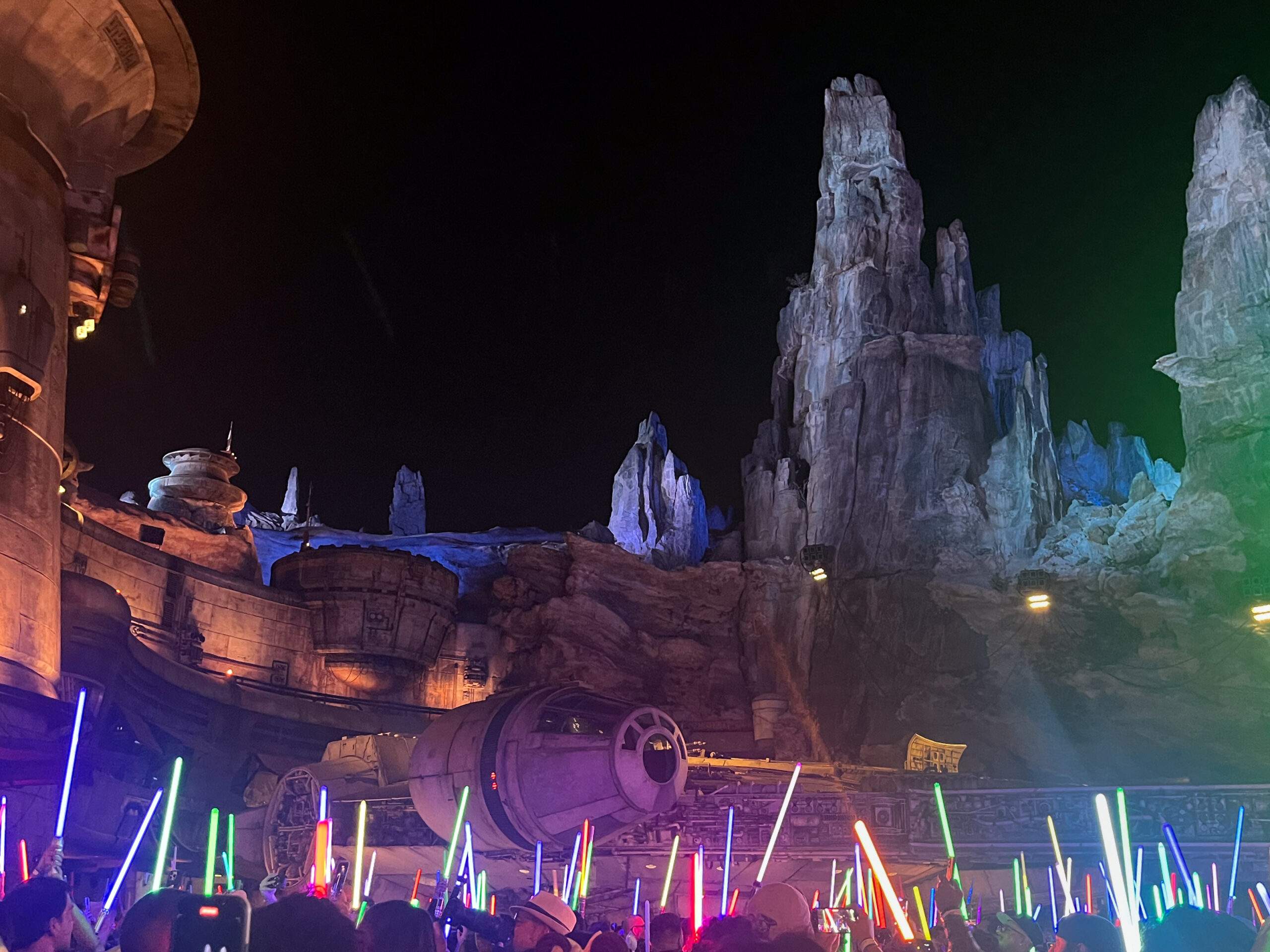12 Things to Plan for a Perfect Disneyland Trip
Or practically perfect anyway! Walt Disney coined Disneyland “the happiest place on earth,” but these days, if you show up without a plan, it’s more likely to be the most stressful place on earth.

The Disney parks have grown over the past several decades, and Disney trips have become a lot more complicated in recent years, so a little prep work goes a long way to make your trip magical and memorable (in the best way). Here are 12 things you need to know or have lined up ahead of your Disneyland trip. Click on the title below to skip ahead to that section:
- When to Go
- Where to Stay
- How Many Days to Visit?
- To Hop or Not to Hop?
- Lightning Lanes
- Park Reservations
- All About Food
- Dining Reservations
- What is Rope Drop?
- The Disneyland App
- Ride Priorities
- Entertainment
1. When to Go
There are many factors to consider when deciding when to visit Disneyland. You might prioritize low crowds, only have availability during a specific week or month, or you might not be able or willing to pull kids out of school. Given that everyone has different circumstances when planning a Disney trip and the fact that crowd calendars can be a handy tool, but cannot always accurately predict the future, I cannot say the best time or worst time to visit. However, I can give a very surface-level list of pros and cons for each month of the year:
| Month | Pros | Cons |
| January | – Lunar New Year Festival – Usually less busy – Often ticket specials | – Cooler temperatures – Can be rainy – Often several ride maintenance closures |
| February | – Lunar New Year Festival – Usually less busy (Aside from around President’s Day) – Often ticket specials | – Can be VERY busy around President’s Day week – Cooler temperatures – Can be rainy – Often several ride maintenance closures |
| March | – Food & Wine Festival – Sometimes ticket specials | – Unpredictable weather – Very busy during spring breaks (which vary) |
| April | – Star Wars Nite (on select dates) – Food & Wine Festival – Usually comfortable temperatures | – Very busy during spring breaks (which vary) – Disneyland closes early on Star Wars Nites |
| May | – Star Wars Nite (on select dates) – Can get lucky with low crowds between spring break and summer break – The weather is usually comfortably warm | – Grad Nites (on select dates) mean lots of teenagers in the park (not necessarily a con but good to know) – Disneyland closes early for Grad Nites and Star Wars Nites – Some hot days |
| June | – The weather is usually comfortably warm – Fewer ride maintenance closures | – Can be very busy, especially the middle and end of the month once summer break starts – Grad Nites (on select dates) mean lots of teenagers in the park (not necessarily a con but good to know) – Some hot days |
| July | – Fewer ride maintenance closures | – Can be very busy all month – The weather can get quite hot |
| August | – Halloween time starts – Oogie Boogie Bash – Fewer ride maintenance closures | – Can be very busy at the beginning and middle of the month – California Adventure closes early on Oogie Boogie Bash nights – The weather can get quite hot |
| September | – Halloween time – Oogie Boogie Bash – Fewer ride maintenance closures | – California Adventure closes early on Oogie Boogie Bash nights – The weather can get quite hot |
| October | – Halloween time – Oogie Boogie Bash – The weather is usually comfortably warm | – VERY busy during school fall breaks – California Adventure closes early on Oogie Boogie Bash nights – Some hot days |
| November | – The holiday season starts – Usually comfortable weather | – A few rides require short maintenance closures to switch from Halloween to Christmas theme |
| December | – Holiday season – Usually comfortable weather – Fewer ride maintenance closures | – Tends to be busy with the busiest time of the year between Christmas and New Year’s |
2. Where to Stay
The number one question I hear about Disney trip hotels is…
Is it worth it to stay on property at a Disneyland Hotel?
If it is within your budget, here are the benefits of staying in an on-property hotel. These hotels include Disneyland Hotel, Grand Californian Hotel, and Pixar Place Hotel.
Benefits of Staying On-Property:
- You stay in the Disney “bubble,” so you are always surrounded by the magic.
- You get 30 minute early entry to one of the parks per day. Make sure to double-check that your park reservations line up correctly.
Disneyland early entry days: Tuesday, Thursday, and Saturday
California Adventure early entry days: Monday, Wednesday, Friday, and Sunday - The pool areas at Disneyland Hotel are the nicest in the area, and the other two properties have above-average pool areas as well. This is obviously only a benefit if the weather is warm enough to utilize the pool.
- Grand Californian has direct access into California Adventure park so the proximity can’t be beat.
- Pixar Place also has private entry into California Adventure Park (but it is a longer walk to the esplanade and the Disneyland entrance than many off-property hotels).
So, I always say if you can check two of these three (but ideally all three) boxes, it can be worth it to stay at an on-property hotel:
- You want to spend the premium
-AND- - You plan to get up early
-and/or- - It’s warm enough to swim
If you don’t plan to utilize early entry access or the pool, I honestly don’t think it’s worth the splurge because it is, in fact, a splurge to stay on-property.
Staying at a “Good Neighbor” Hotel (Off-Property)
If on-property isn’t for you for this trip, the good news is that there are many other options. Close-by hotels within a reasonable distance (and often bookable with Disneyland packages) are called “Good Neighbor” hotels. Here are a few options:
Walking Distance Hotels
My recommendation is to find a hotel that fits your needs on or near Harbor Boulevard, within walking distance to the park entrance gates. At least one of these hotels is actually closer walking distance to the Disneyland entrance gates than Disneyland Hotel, and there is a wide range of accommodations that include more budget-style properties and mid-range options. There aren’t a lot of high-end hotels in the direct area, and note that I use the term “budget-style” instead of “budget” because none of the nearby hotels are cheap. Hotels within the direct vicinity of Disneyland will cost more than their equal-quality counterparts elsewhere.
Hotels Within Walking Distance to a Disneyland Parking Structure
This includes hotels near the convention center. You can walk to a Disney parking structure and take transportation to the park or walk the distance. Taking the parking structure transportation is allowed even if you don’t park there.
Hotels with Public Transportation Access or Their Own Shuttle
These hotels are usually the lowest price option, but you do have to wait for your hotel’s private shuttle or the ART (Anaheim Regional Transit). This is often no big deal but can be a pain if you leave right after the fireworks when the majority of guests leave the park.
3. How Many Days to Visit?
3-4 park days for your first-ever visit or your first visit in a long time is perfect.
Three is perfect at a slower time of year or if your group likes to move at a faster pace and I would recommend two days at Disneyland and one day at California Adventure Park.
If your budget and schedule allow you to do four park days, you can go at a slower pace and/or take more breaks, or just accomplish more if it’s a busy time of year. For four days, I would recommend two days at each park.
What about 5 days?
If it’s a very busy time of year, the weather is really hot, or you’re with a group that wants to take their time, five days could work! You would have plenty of time to take breaks back at your hotel, and you would definitely get a chance to repeat favorite attractions or go for a second taste of a favorite snack or meal!
I think more than five park days is a lot at the Disneyland Resort and can be overwhelming for a first timer. If you are more familiar with Walt Disney World, you might be surprised to know that you can walk from Disneyland to California Adventure in less than 5 minutes, and there are many Disney and non-Disney hotel options within reasonable walking distance. Also, it’s a total of two parks, and although there is a lot packed into Disneyland, the footprint of Disneyland is much smaller than the Magic Kingdom.
Is 2 days worth it?
Two is short, but you could still get in a lot of your top priorities, especially at a slower time of the year. You’ll want to plan ahead with some ride strategy and don’t even think about sleeping in and skipping rope drop!
Can you do the parks in 1 day?
It’s been done! Just like with two days, you’ll want a strong plan! Also, it’s worth noting that depending on the time of year, a single day park hopper ticket isn’t usually a savings over a 2-day, 1-park per day ticket. So, if time is the main factor, decide if you have top priorities in one or both parks to determine if you should splurge for the park hopper. If money is the main factor in limiting your trip length, stick to one park for the day or consider a two-day ticket. Most hotels will hold your luggage, and there are luggage-sized lockers in downtown Disney if you want to visit the parks on your arrival or departure day.
4. To Hop or Not to Hop?
Park hopping allows you to bounce back and forth between Disneyland and California Adventure Park after 11 am. I don’t think this is necessary except for in very specific cases, so I usually consider park hopping a luxury upgrade however park hopping might be worth it for very quick trips, especially one-day visits when you want to experience both parks.
5. Lightning Lanes
Lightning Lanes deserve their own blog post and, honestly, perhaps a whole course to make sense of the details, but I will give a basic overview here and expect a blog dedicated solely to lightning lanes in the near future. If you haven’t been the the Disenyland Park in several years, Lightning Lane is the the newest paid version of a fast pass or max pass and the aim is to help you avoid waiting in long lines.
Types of Lightning Lanes:
- Lightning Lane Multi-Pass:
- Most common option
- Previously known as Genie+.
- Allows you to book Lightning Lanes for select attractions and bypass some of the standby line.
- Cost varies around approximately $35 per day per person.
- Can use once per day per person per qualifying attraction.
- Can purchase with tickets or day-of, depending on availability.
- Can start to book Lightning Lanes once you scan into the park for the day.
- You can book the next Lightning Lane after you scan in for the previous one or after two hours have passed.
- Lightning Lane Single Pass:
- Available for two attractions:
- Rise of the Resistance in Disneyland
- Radiator Springs Racers in California Adventure.
- Price varies but usually between $19-$35 per person per ride.
- Can book once you scan into the park for the day.
- Available for two attractions:
- Lightning Lane Premier Pass:
- Allows you to ride each Lightning Lane attraction once, including Lightning Lane Single Pass attractions.
- No need to schedule Lightning Lanes, simply scan in using the app or a MagicBand+.
- Most expensive option.
- Cost varies between $299-$399 per person per day.
- Cannot purchase with tickets but typically available from around one week before visit to day-of, depending on availability.
6. Park Reservations
Something very important to know about both Disneyland and California Adventure Park is that your ticket does not guarantee entry. You have to take another step to make park reservations for the days you’d like to visit each park. Some notes about park reservations:
- You can make park reservations up to 180 days in advance
- You can change park reservations, but only if there is availability, so don’t bank on this being a last-minute option
- If you are staying on-property and want to take advantage of early entry, make sure your park reservations line up with which day allows early entry into which specific park:
Disneyland early entry days: Tuesday, Thursday, and Saturday
California Adventure early entry days: Monday, Wednesday, Friday, and Sunday - Note any after-hours events when the park will close early. This is also noted on the Disneyland website when you select a day that one of the parks closes early.
- If you purchase a park hopper ticket, you are allowed to hop back and forth, starting at 11 am. So you should make your park reservation for your starting park that day.
7. All About Food
This blog is dedicated to all things Disney, but most of all, Disneyland food. I have no shortage of things to say about food in the parks, but I will give a brief overview and encourage you to dive as deep as you like into the Disney food scene! Here are my top, basic tips:
- You can bring food into the parks. Anything except oversized coolers, alcohol, and ice. This is a great option to save money, have a backup snack at the ready when it’s busy or have safe options for picky eaters.
- You do not need to have dining reservations to eat. Read more about dining options below, but you can get great meals and snacks from quick-service restaurants, and some would argue that’s the best food in the parks.
- Mobile order to save time. More about this in the Disneyland App section, but you can mobile order at many dining locations to avoid waiting in line.
- Eat off-hours. You do not have to eat at completely unusual times, but if you avoid eating lunch at noon and dinner right at 5 or 6, you’ll likely avoid some of the largest dining crowds.
8. Dining Reservations (or not!)
Though not required, if you would like to make dining reservations, most restaurants open reservations 60 days out. If you are looking for a reservation at a very popular restaurant, I recommend setting an alarm for 6 am exactly 60 days before the reservation date you’d like and make sure you already have a credit card loaded on your account to secure the reservation. You can book dining reservations before you’ve even purchased park tickets, but make sure your reservations line up with your park days because you’ll need a corresponding park ticket to get into a restaurant that’s inside one of the parks. Popular reservations include (but are not limited to):
- Lamplight Lounge (California Adventure)
- Blue Bayou (Disneyland)
- Trader Sam’s (Disneyland Hotel – no park ticket/reservation required)
- Any character/princess breakfast/meal (options in Disneyland, Disneyland Hotel, and Grand Californian)
9. What is Rope Drop?
If you want to maximize your time in the parks and get the most attractions and experiences in as possible, I recommend you rope drop, close the park, or both. My ideal park day includes rope drop, relaxing at my hotel in the afternoon and returning to the park for dinner, a few more attractions and nighttime entertainment. The afternoon is the busiest and hottest time of day so it’s perfect for a hotel break if you stay close enough and this can be a great way to reset from all of the overstimulation in the parks, especially if you have young children in your group.
What is Rope Drop?
Rope Drop is being “at the rope” when the park opens, so you are already through security and the ticketing gates and in the hub at the entrance of the land you want to start in that day. Depending on how busy the park will be that day, this means arriving at security at least 30 minutes before the park opens and up to one hour before park opening on very busy days.
Even though the rope drop crowd will look large (because everyone is condensed in a small area until the rope drops), the parks are the quietest at opening. It won’t feel as busy once these crowds disperse to their desired starting lands and you are almost guaranteed shorter wait times than you will experience later in the day. If you are not purchasing Lightning Lane Multi Pass and you don’t plan to close down the park, rope drop is pretty much the only way to avoid long waits for the most popular rides. The parks get the busiest mid-morning and stay busy through the evening, so you can also experience shorter waits at the end of the day. Park closing times vary so you will want to check the schedule ahead of your trip.
I will share more specific park strategies soon, and you can contact me for one-on-one park day planning, but here are a few quick rope drop tips.
Rides to Rope Drop
Structuring your Disneyland day can vary so much, depending on your interests. I love to rope drop Fantasyland dark rides, but I don’t think that will fly when I have teenagers. Here are some great rope drop options (but always be prepared to utilize plan B in case a ride is down!).
- Fantasyland
- Space Mountain
- Jungle Cruise
- Toontown
Rides NOT to Rope Drop
These rides are best avoided first thing when the park opens, especially in the first hour. Some of these aren’t always open at rope drop, some don’t run at full capacity until later in the morning, and some have longer waits at rope drop than if you wait an hour or two (or later):
- Disneyland:
- Rise of the Resistance
- Peter Pan
- Honorable mentions:
- Big Thunder Mountain Railroad
- Indiana Jones
- Alice in Wonderland
- California Adventure
- Radiator Springs Racers
Rope dropping is yet another category that deserves its own complete blog post, so keep an eye out for that soon!
10. The Disneyland App
Before your trip, download and familiarize yourself with the Disneyland App. Here are a few of the ways you might use the app on your trip:
- Check attraction wait times
- Book Lightning Lanes (if you are using Lightning Lane Multi Pass or purchasing a Lightning Lane Single Pass)
- Book Virtual Queue (this is for new rides and to score a great spot to view World of Color at California Adventure)
- Mobile order food
- Check restaurant wait times and join walk-up wait lists
- Save, view, and download ride photos
- Find PhotoPass photographers
- View and download PhotoPass photos
- Check entertainment schedules
- Find characters throughout the parks
Download the app and explore so you have an idea of how to use it before you’re in the parks. You can use a lot of the features no matter where you are, so, for example, you can mobile order your lunch from your hotel room at 7a but you cannot book your first Lightning Lane until you have scanned into the park for the day.
11. Ride Priorities
The benefit of prioritizing rides is two-fold. You’ll be less likely to miss your must-rides, and you’ll skip waiting in line for rides that your group will likely not even enjoy! Take a peek at the ride list ahead of time and know your crowd so you can eliminate unnecessary rides and note top picks.
I recommend only eliminating rides that you’re pretty confident are too scary or you want to avoid for a specific reason. For example, perhaps you get sick on anything that spins, so you cross any spin rides off your list. I don’t recommend eliminating every ride that seems too young because these can be nostalgic or surprisingly fun, and some of these rides are rich in Disney history. I totally get it if you don’t need to ride on a carousel at Disneyland or you get claustrophobic so you’ll skip Finding Nemo Submarine Voyage but maybe you remember going on Mr. Toad’s Wild Ride as a kid or know that it’s one of the park’s original rides so you want to experience it even if it doesn’t provide a thrill.
You don’t need a complete, detailed Disneyland itinerary but know yourself, know your group, and then you can prioritize the most important rides for your trip!
12. Entertainment
If it’s your first trip, make sure to allow time for entertainment. The entertainment calendar can vary widely, but on any given day, there might be several stage shows, street bands and performers, a parade or cavalcade, and multiple nighttime shows. Disney was, first and foremost, an entertainment company, and this is obvious in any park performance. For parades and nighttime shows, you’ll want to arrive a bit early to find a viewing spot. For stage shows, you can usually arrive last-minute if you aren’t picky about your seat and don’t go out of your way for any cavalcade. These are short, low-production parades (more like marches) and not worth waiting for, but they are cute if you happen to be around as they pass.




